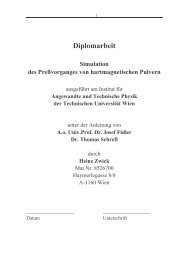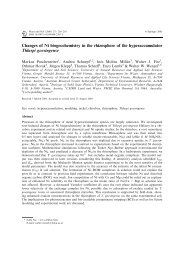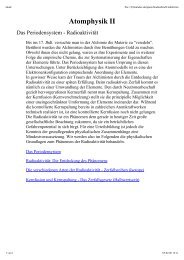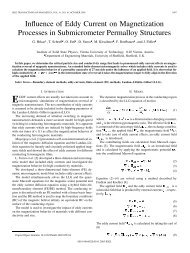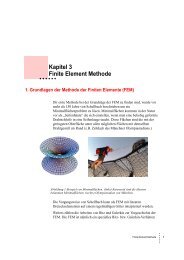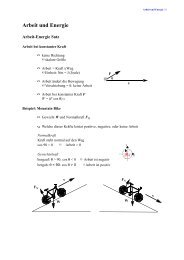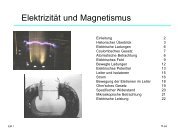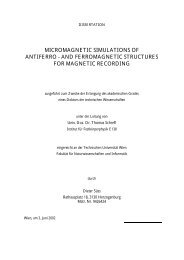Read Back Signals in Magnetic Recording - Research Group Fidler
Read Back Signals in Magnetic Recording - Research Group Fidler
Read Back Signals in Magnetic Recording - Research Group Fidler
Create successful ePaper yourself
Turn your PDF publications into a flip-book with our unique Google optimized e-Paper software.
Introduction<br />
1 IntroductionEquation Section 1<br />
The idea to use magnetism for record<strong>in</strong>g orig<strong>in</strong>ates from Oberl<strong>in</strong> Smith (1840-1926), an<br />
<strong>in</strong>ventor, <strong>in</strong>dustrialist, and mechanical eng<strong>in</strong>eer. His idea based on a visit to Thomas Edison’s<br />
laboratory <strong>in</strong> 1878. Lack<strong>in</strong>g time to pursue further development - it is not known whether he<br />
built a work<strong>in</strong>g device - he published a description of magnetic record<strong>in</strong>g <strong>in</strong> Electrical World,<br />
Sep. 8, 1888 [1]. Figure 1.1 shows the orig<strong>in</strong>al draw<strong>in</strong>g of Oberl<strong>in</strong> Smith. It demonstrates the<br />
basic pr<strong>in</strong>ciple of magnetic audio record<strong>in</strong>g used up to now. The audio waves are transformed<br />
by the microphone (A) <strong>in</strong>to an electrical signal and are recorded <strong>in</strong> the form of magnetization<br />
patterns on a str<strong>in</strong>g covered with iron fil<strong>in</strong>gs (C), pass<strong>in</strong>g through an electromagnet (B). To<br />
reduce noise a battery (F) supplies bias current. The str<strong>in</strong>g is moved from the supply reel (D)<br />
to the take up reel (E).<br />
Probably <strong>in</strong>spired by Oberl<strong>in</strong> Smith’s article Valdemar Poulson built the first work<strong>in</strong>g<br />
magnetic record<strong>in</strong>g device (see Figure 1.1). He used an <strong>in</strong>ductive head mov<strong>in</strong>g over a wire<br />
wrapped drum. In the follow<strong>in</strong>g decades a lot of improvements were <strong>in</strong>vented, but as<br />
<strong>in</strong>formation carrier ma<strong>in</strong>ly wire wrapped drums were used. Later tapes coated with magnetic<br />
powder replaced them.<br />
Figure 1.1: The orig<strong>in</strong>al draw<strong>in</strong>g of Oberl<strong>in</strong> Smith (1888) and Valdemar Poulson’s<br />
telegraphone [2].<br />
7



